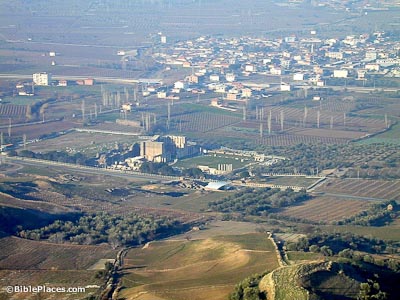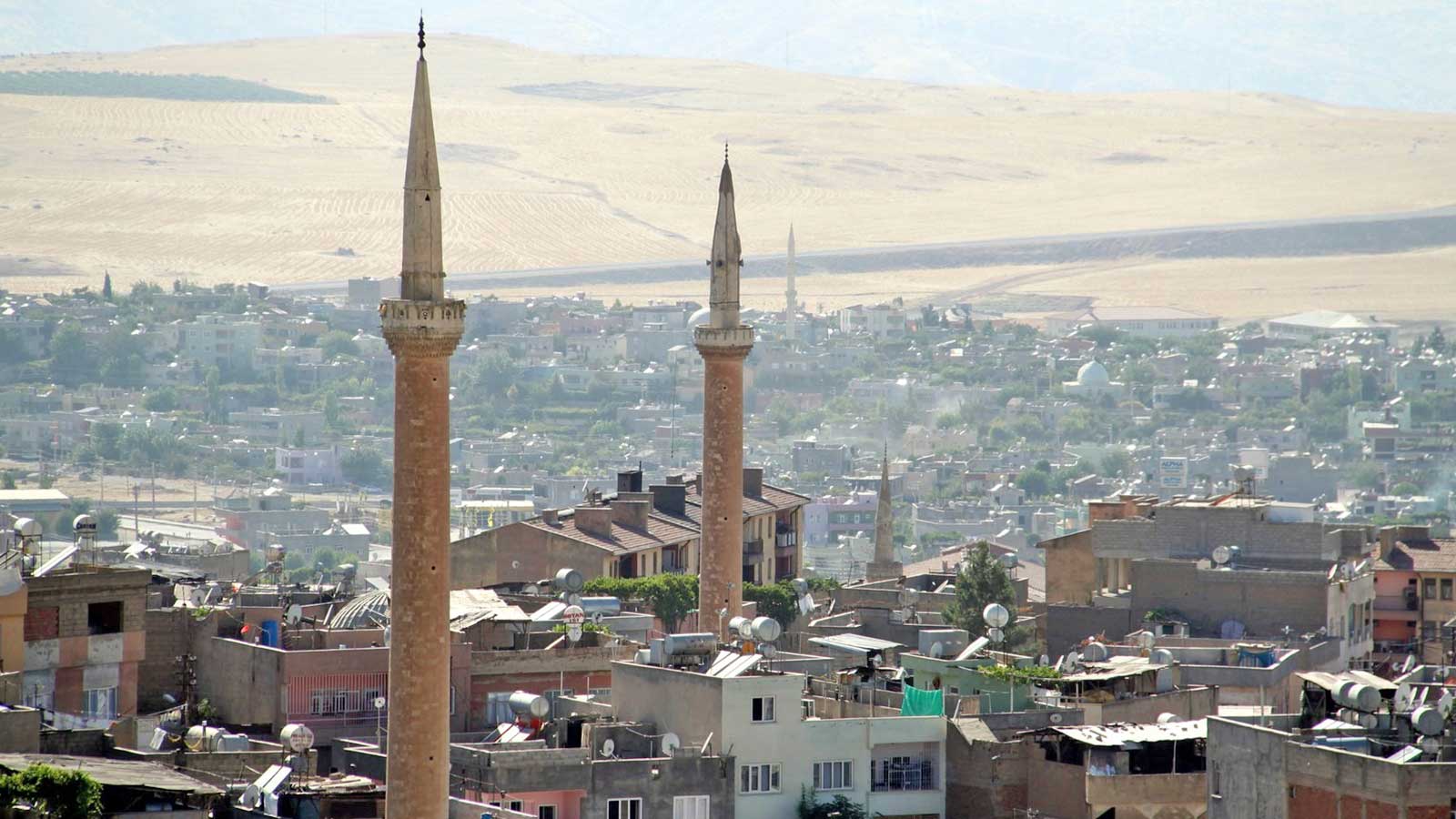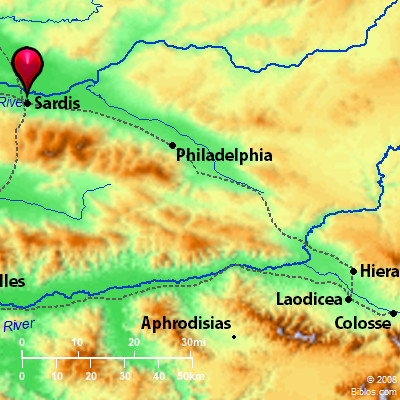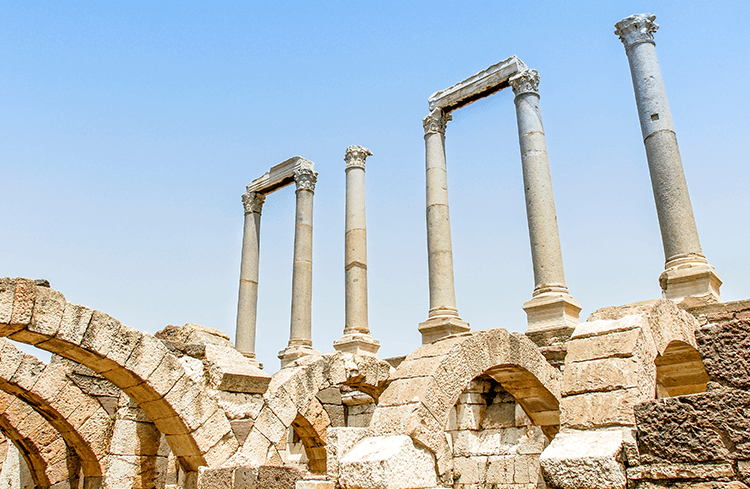

Sardis

Sardis is Present day Sert or Siirt in Turkish

The Bath-Gymnasium complex at Sardis, late 2nd - early 3rd century AD, Sardis, Turkey
---------------------------------------------------------

Revelation 3
1 “To the angel[a] of the church in Sardis write:
These are the words of him who holds the seven spirits[b] of God and the seven stars. I know your deeds; you have a reputation of being alive, but you are dead. 2 Wake up! Strengthen what remains and is about to die, for I have found your deeds unfinished in the sight of my God. 3 Remember, therefore, what you have received and heard; hold it fast, and repent. But if you do not wake up, I will come like a thief, and you will not know at what time I will come to you.
4 Yet you have a few people in Sardis who have not soiled their clothes. They will walk with me, dressed in white, for they are worthy. 5 The one who is victorious will, like them, be dressed in white. I will never blot out the name of that person from the book of life, but will acknowledge that name before my Father and his angels. 6 Whoever has ears, let them hear what the Spirit says to the churches.
-----------------------------------------------------------------------------------
πεπληρωμένα (peplērōmena) — 1 Occurrence
Revelation 3:2 V-RPM/P-ANP
GRK: τὰ ἔργα πεπληρωμένα ἐνώπιον τοῦ
NAS: your deeds completed in the sight
KJV: thy works perfect before God.
INT: works complete before the
----------------------------------------------------------------------------------
Shema Yisrael (Shema Israel or Sh'ma Yisrael; Hebrew: שְׁמַע יִשְׂרָאֵל Šəmaʿ Yīsrāʾēl, "Hear, O Israel"
------------------------------------------------------------------------------
History of Sardis
Sardis was “one of the oldest and most important cities of Asia Minor, and until 549 BC, the capital of the kingdom of Lydia. It stood on the northern slope of Mt. Tmolus; its acropolis occupied one of the spurs of the mountain. At the base flowed the river Pactolus which served as a moat, rendering the city practically impregnable. Through the failure to watch, however, the acropolis had been successfully scaled in 549 BC by a Median soldier, and in 218 by a Cretan (compare Rev 3:2, Rev 3:3)” (International Standard Bible Encyclopedia, 1939, “Sardis”).
Earthquakes were common in this part of the world, and in A.D. 17 the city was destroyed by such a tremor. The Roman emperor Tiberius “remitted the taxes of the people and rebuilt the city, and in his honor the citizens of that and of neighboring towns erected a large monument, but Sardis never recovered its former importance (compare Rev 3:12)” (ibid.).
https://lifehopeandtruth.com/prophecy/revelation/seven-churches-of-revelation/sardis/
------------------------------------------------------------------------------------------------------------------
Kingdom of Lydia
Lydia (Lydian: , Śfarda; Aramaic: Lydia; Greek: Λυδία, Lȳdíā; Turkish: Lidya) was an Iron Age kingdom of western Asia Minor located generally east of ancient Ionia in the modern western Turkish provinces of Uşak, Manisa and inland Izmir. The ethnic group inhabiting this kingdom are known as the Lydians, and their language, known as Lydian, was a member of the Anatolian branch of the Indo-European language family. The capital of Lydia was Sardis.[1]
The Kingdom of Lydia existed from about 1200 BC to 546 BC. At its greatest extent, during the 7th century BC, it covered all of western Anatolia. In 546 BC, it became a province of the Achaemenid Persian Empire, known as the satrapy of Lydia or Sparda in Old Persian. In 133 BC, it became part of the Roman province of Asia.
Lydian coins, made of silver, are among the oldest in existence, dated to around the 7th century BC.[2][3]
https://en.wikipedia.org/wiki/Lydia
----------------------------------------------------------------------------------------------------------
What Is the Church at Sardis?
“The Book of Revelation addresses seven letters to seven churches in Asia Minor. Each letter, as proclaimed by Jesus and recorded by John the Apostle, declares the triumphs and failings of the recipient churches and warns each congregation to repent,” explains Delores Smyth in What Do the 7 Churches in Revelation Represent?
The Church at Sardis, along with the churches in Ephesus, Smyrna, Pergamum, Thyatira, Philadelphia, and Laodicea, may have been selected to receive John’s letters because of their geographical location. Each of the seven churches was situated along an established trade route that connected the most populated regions of the province. The letters would have spread like wildfire to every church in the province along that route until all Believers gained access.
What Was the History of the Church at Sardis?
Sardis’s history was a fitting backdrop for the specific warning Christ issued in their letter. About 1200 years before Jesus came, Sardis took its place as the prominent capital of the Lydian kingdom. The citizens of Sardis enjoyed safety and prosperity beyond measure. Located at the foot of Mount Tmolus, the city was well fortified, and the bounty of the Practolus River provided them with fresh water and gold.
Sardis’s natural resources gained them a high level of respect from all the provinces in the area. With the mountains as their shield and their wealth protected atop a fortified hill, surrounded by steep cliffs, the city was called, “Sardis, the Impregnable.”
But Sardis’s pride and overconfidence in their resources would soon take its toll. Believing their city to be “impregnable” the guards became careless in their duties. Even after a surprise attack by the Persians in 549 BC nearly destroyed the city, Sardis’s military didn’t perceive the need for vigilance or reinforcement. Years later they were attacked by the Greeks, who used the very same tactics employed during the Persian invasion.
After an earthquake devastated Sardis in 17 A.D. the city was only partially rebuilt. At the time John’s letter was penned, around 53 A.D., Sardis’s resources and reputation were rapidly declining. But Sardis’s leaders refused to accept the signs of death all around them. Instead, they clung to the city’s historical triumphs and insisted that Sardis would once again rise to its former glory. In blissful ignorance, they refused to acknowledge the degrading effects of their own indulgence and neglect and continued to prop up their decaying city with tales from past victories.
The Church at Sardis would have known their city’s history. Therefore, Christ’s letter had deep personal relevance to them, as well as spiritual importance. Sardis means “those escaping” or “that which remains.” After reading John’s letter, the Believers at Sardis were left with a choice. They could follow the way of their city’s history, tradition, and culture—or the church could follow the way of the Lord.
What Was Jesus's Message to the Church at Sardis?
The message Jesus gives to the church in Sardis (Revelation 3:1-6) is a sobering one. He knows their works intimately, but He is also aware of the façade they display to the world. The two realities are diametrically opposite.
The Sardinian Believers had effectively built a winning brand for themselves in their community. By all appearances, the church in Sardis was a vibrant, effective powerhouse. But inside they were lifeless.
Jesus issues a strong warning to the dying church. “Wake up! Strengthen what remains and is about to die, for I have found your deeds unfinished in the sight of my God. Remember, therefore, what you have received and heard; hold it fast, and repent. But if you do not wake up, I will come like a thief, and you will not know at what time I will come to you” (Revelation 3:2-3).
But not all the Believers in Sardis were spiritual zombies. After His pronouncement to the wayward church, Jesus addresses a handful of people in the congregation who had chosen not to follow the example of their deceived brothers and sister in the Lord. He commends the faithful few for not having “soiled their clothes,” in the filth of hypocrisy. Jesus bestows upon these devoted individuals the honor to walk with Him, “dressed in white.”
Finally, Jesus offers a glimmer of hope to the church in Sardis, and it’s packaged in a promise. To any who were willing to awaken to His truth, stop living the lie, and repent—Jesus promises victory. Their soiled garments will be made white, and their names will be written in the book of life to be acknowledged before God and the angels.
Why Is Spiritual Deadness Such a Horrid Condition in the Church?
When Christ, in the form of the Holy Spirit, comes to live inside the heart of each Believer, a supernatural metamorphosis occurs. Through Adam’s sin, all humanity inherited spiritual death, but Jesus is our way, truth, and life. Our life is in Him, and His life shines through us. The same resurrection power that brought Jesus back to life is the power that fuels the Christian life. His Church is a collective reflection of the divine light and life of Jesus.
When a church attempts to operate from any other power source than Christ, that church can officially be identified as dead. The problem with a deceased church is that it rarely recognizes the condition. A dead church will often continue to function in its own power, programs, and pomp and attribute the momentum to Christ—celebrating every temporal victory as if it had eternal merit.
https://www.biblestudytools.com/bible-study/topical-studies/signs-from-the-church-at-sardis-that-your-church-may-be-dying.html
-----------------------------------------------------------------------
5 The Church in Sardis: Protestant Reformation (A.D. 1517–1750)
5. SARDIS – means ‘those escaping’ (The Reformers coming out with others from Roman Catholicism)
-----------------------------------------------------------











